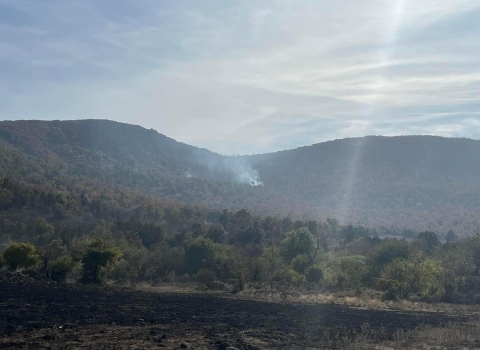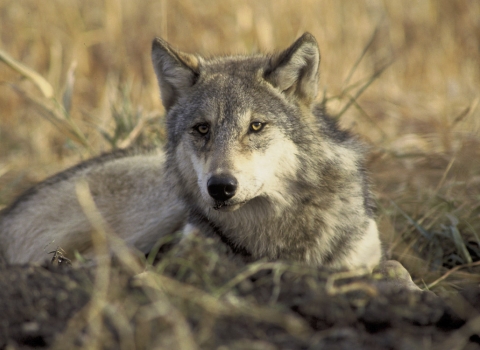St. George, UT - The Bureau of Land Management (BLM) and U.S. Fish and Wildlife Service (Service) have issued the final environmental impact statement (Final EIS) that considers a highway right-of-way application, amended habitat conservation plan and incidental take permit for the Mojave desert tortoise and proposed amendments to resource management plans in Washington County, Utah. The BLM and Service will publish a notice of availability in the Federal Register and the documents will be available for review on the BLM’s ePlanning website at https://go.usa.gov/xw8TX on Friday, November 13.
“We have worked to balance the merits of the Northern Corridor Project application and the many resources that comprise the Red Cliffs National Conservation Area and its enabling language to develop the final environmental impact statement and proposed resource management plan amendments.” said BLM Utah State Director Greg Sheehan. “I value our close working relationship with the U.S. Fish and Wildlife Service and for their unique expertise as partners in this analysis. Together we have developed these documents these documents to achieve the best balance of public interests.”
“Washington County continues to build on 25 years of success implementing the original habitat conservation plan and providing for the continued conservation of the Mojave desert tortoise,” said Service Regional Director Noreen Walsh. “We are carefully studying the potential impacts associated with the Northern Corridor Highway as presented in the final environmental impact statement and working with the BLM and habitat conservation plan partners to balance the needs of the tortoise and local communities.”
The BLM and Service identified the preferred alternative, Alternative 3 (the Utah Department of Transportation application), with Alternative B (the proposal to add a new Red Cliffs Desert Reserve Zone 6) for both proposed amendments to the resource management plans, after reviewing comments received from the public and analyzing the data gathered. The preferred alternative is not a final decision. The agencies will issue records of decision following the resolution of any protests of the final environmental impact statement.
“The development of the final environmental impact statement included detailed analyses of the comments the public submitted on the draft environmental impact statement,” shared St. George Field Manager Keith Rigtrup. “The National Environmental Policy Act helps us refine our efforts through public participation and ensures we have a full understanding of the issues, concerns and proposed alternatives for efforts like this.”
Links and information about the final environmental impact statement, proposed amendments to the resource management plans and final amended habitat conservation plan are available at https://go.usa.gov/xw8TX. If you would like to request to view a hard copy, please call the St. George Field Office for more information at (435) 688-3200, Monday through Friday, except holidays.
For additional information on the Final EIS, please contact Gloria Tibbetts, BLM Color Country District Planning and Environmental Coordinator at (435) 865-3063 or email BLM_UT_NorthernCorridor@blm.gov. For additional information on the ITP application and Final Amended HCP, please contact Yvette Converse, U.S. Fish and Wildlife Service, Utah Ecological Services Field Office Supervisor at (801) 975-3330 ext. 61912. Persons who use a telecommunications device for the deaf may call the Federal Relay Service (FRS) at (800) 877-8339 to leave a message or question for the above individual. The FRS is available 24 hours a day, 7 days a week. Replies are provided during normal business hours.
The BLM will accept protests of the proposed amendments to the resource management plans through Dec. 14, 2020. All protests must be in writing, either as a hard copy or electronically via BLM’s ePlanning website by the close of the protest period. The only electronic protests the BLM will accept are those received through ePlanning at https://go.usa.gov/xw8TX. All protest letters sent to the BLM via fax or e-mail will be considered invalid unless a properly filed protest is also submitted. The ePlanning page includes a tool for submitting a valid protest electronically. To learn more about filing a protest on the final environmental impact statement, please see: https://www.blm.gov/programs/planning-and-nepa/public-participation/filing-a-plan-protest.
The mission of the U.S. Fish and Wildlife Service is working with others to conserve, protect, and enhance fish, wildlife, plants, and their habitats for the continuing benefit of the American people. For more information on our work and the people who make it happen in the West, visit our website, or connect with us through any of these social media channels: Facebook, Twitter, Flickr, YouTube, and Instagram.
The BLM manages more than 245 million acres of public land located primarily in the 11 Western states and Alaska. The BLM also administers 700 million acres of sub-surface mineral estate throughout the nation. In fiscal year 2018, the diverse activities authorized on BLM-managed lands generated $105 billion in economic output across the country. This economic activity supported 471,000 jobs and contributed substantial revenue to the U.S. Treasury and state governments, mostly through royalties on minerals. Follow BLM on Twitter, Facebook, and Flickr @BLMUtah



